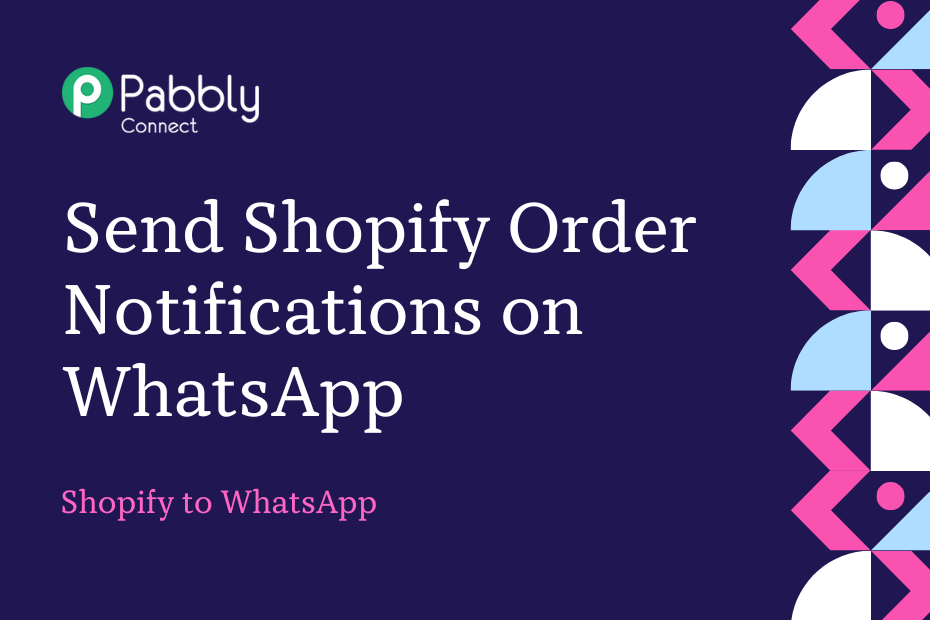Let us look at how you can integrate Shopify with WhatsApp. Upon completing this integration, any time a customer places an order on your Shopify store, they will automatically receive an order confirmation message via WhatsApp.
This automation requires a one-time setup, for which we will use Pabby Connect.
We will begin by linking Shopify with Pabbly Connect to capture the customer details, following that we will link Pabbly Connect with WhatsApp and send a message to the customers who placed the order.
Steps to Automatically Send Shopify Order Notifications on WhatsApp
1. Sign In / Sign Up to Pabbly Connect and Create a Workflow
2. Setup Shopify as the Trigger App to Capture New Orders
3. Add a Date / Time Formatter to the Workflow
4. Setup WhatsApp Cloud API as the Action App to Send Messages
5. Compose a Message Template
6. Map the Necessary Fields
Step 1:- Sign In / Sign Up to Pabbly Connect and Create a Workflow
A. Sign In / Sign Up
To begin this process, visit Pabbly Connect and create your account by clicking on the ‘Sign Up Free’ button. You can also click on Sign In if you already have an account.
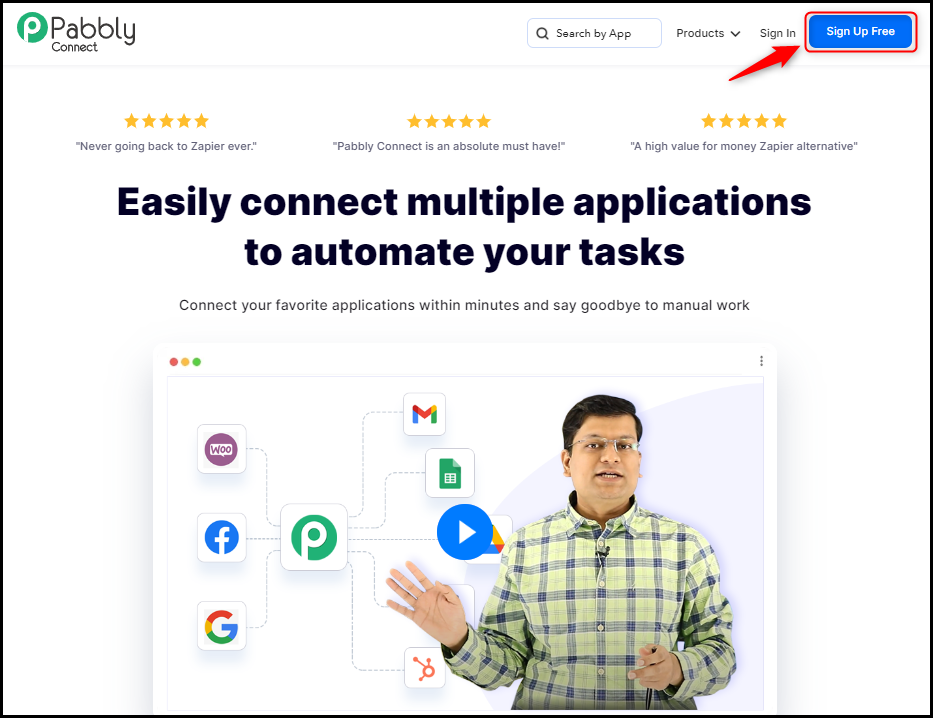
Click on the Pabbly Connect ‘Access Now’ button

B. Create Workflow
To create a new workflow, click the ‘Create Workflow’ button.
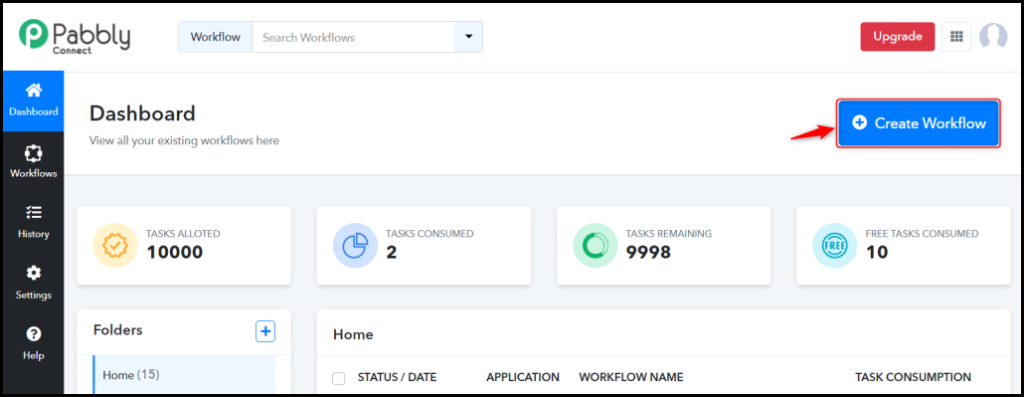
Name your workflow, and click on ‘Create’.

Step 2:- Setup Shopify as the Trigger App to Capture New Orders
We will now look at the steps to establish a link between Shopify and Pabbly Connect. This will enable us to gather new order details.
A. Trigger App
Trigger allows us to choose the application that will receive the data for Pabbly Connect. In our case, it would be Shopify.
Choose ‘Shopify’ as the Trigger App, and select ‘New Order’ as a Trigger Event.

B. Webhook URL
A new Webhook URL will get generated. You will use this Webhook URL to create a connection with your Shopify account. Copy the Webhook URL.

As soon as you Copy the Webhook URL, Pabbly Connect will start looking to capture the order details from Shopify, as indicated by the rotating Waiting For Webhook Response button.

C. Connect Shopify Account
Log in to your Shopify account, click on ‘Settings’, scroll down, and click on ‘Create webhook’.
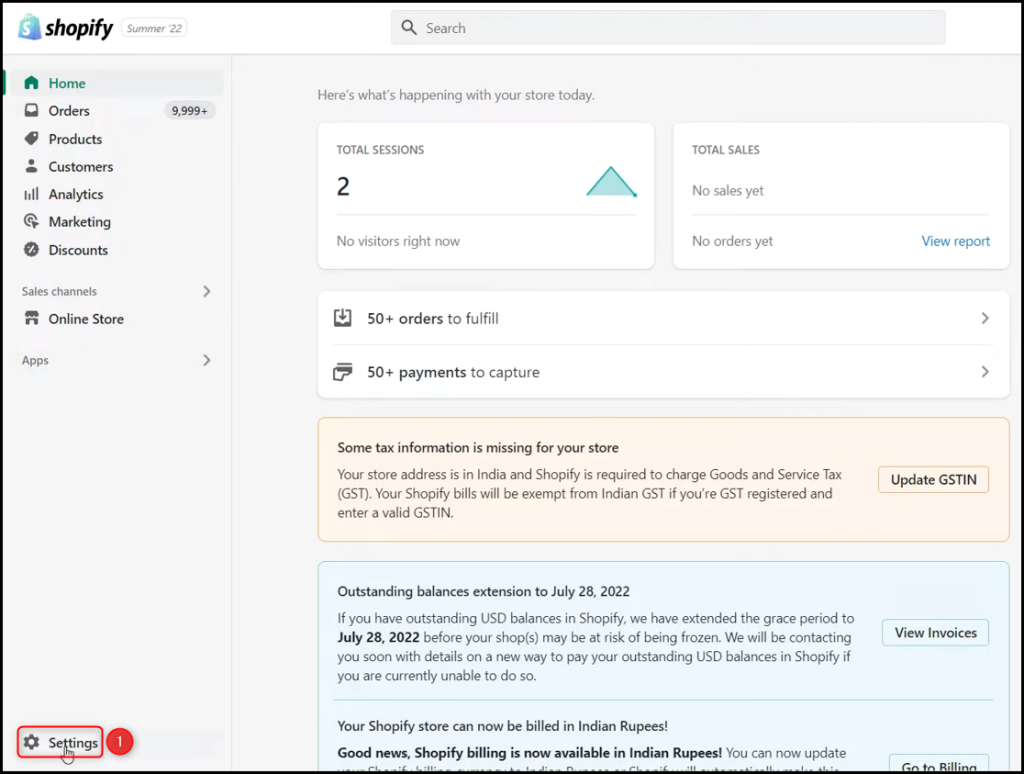
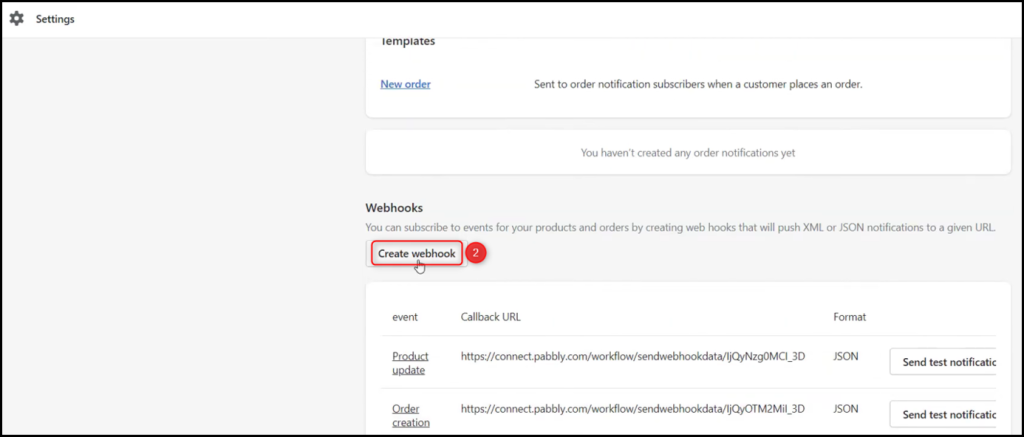
Select the ‘Order creation’ as Event, ‘JSON’ as Format, paste the Webhook URL we copied earlier, select Webhook API version, and click on ‘Save’.

D. Test Connection
To test the established connection, place a dummy order and check Response Received, under which the order details must be visible.
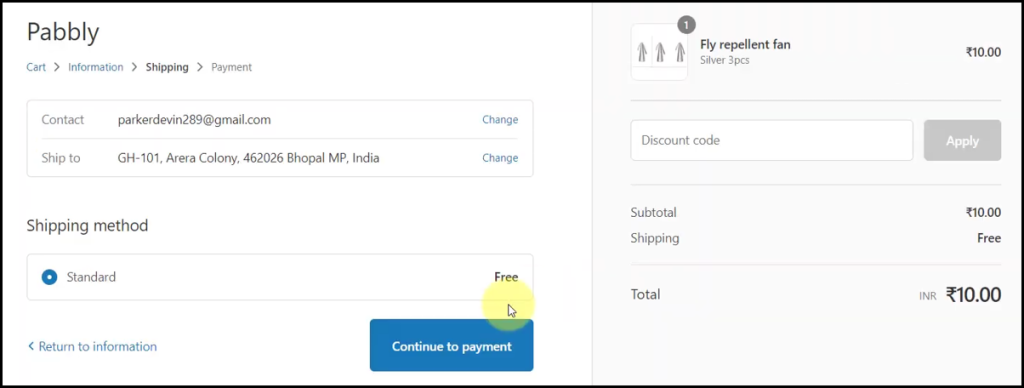
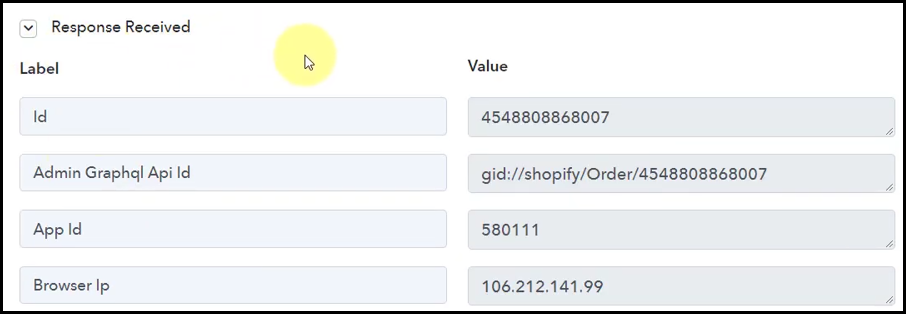
Step 3:- Add a Date / Time Formatter to the Workflow
The details we captured from Shopify does not have an expected delivery date. To generate an expected delivery date, we will add a Date / Time Formatter to our workflow.
Choose ‘Date/Time Formatter by Pabbly’ as the Action App, select ‘Modify Current Date’ as an Action App, and click on ‘Connect’.
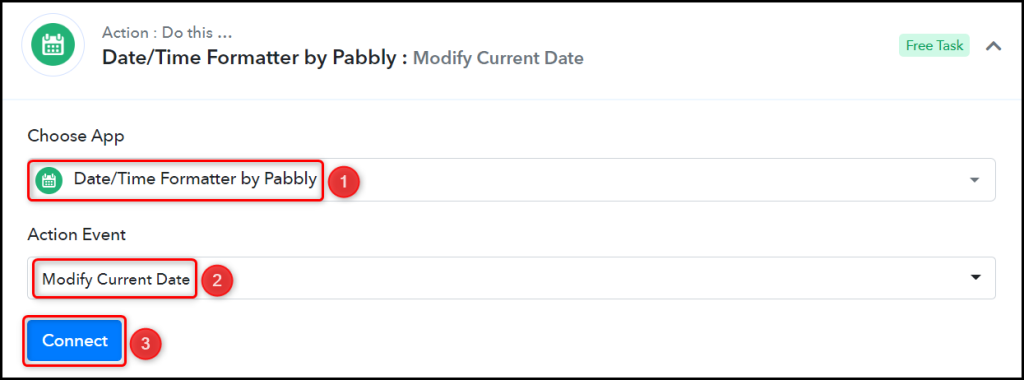
Select the Date Format, Time Zone, Operation, and Unit.
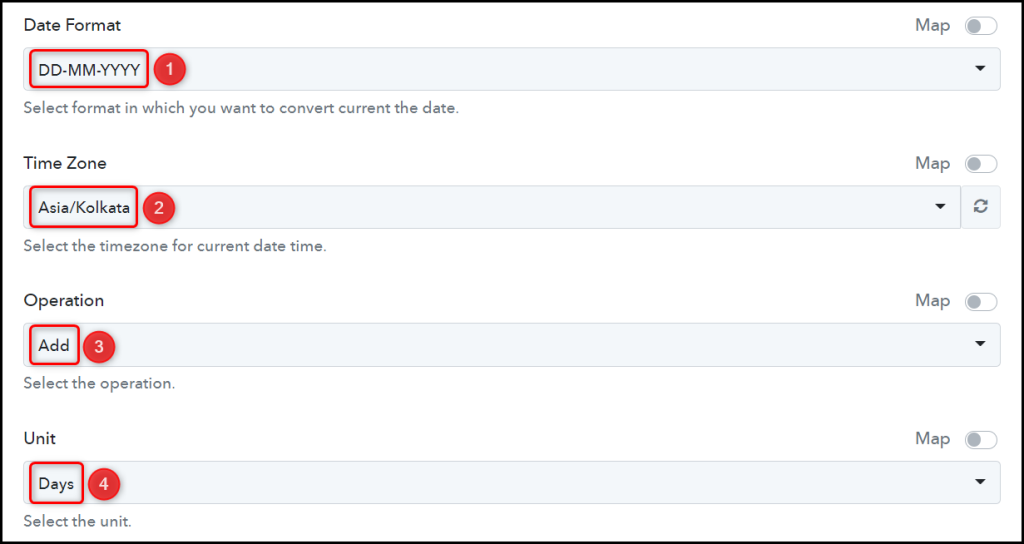
Enter the expected delivery timeframe in terms of days and select the ‘Save & Send Test Request’.

Expand Response Received, under which your expected date of delivery must be visible.

Step 4:- Setup WhatsApp Cloud API as the Action App to Send Messages
After acquiring the customer details from Shopify, our objective is to send WhatsApp messages to the same customers. Therefore, WhatsApp Cloud API will be our Action App.
Note: Follow steps 1 to 3 of this blog to create a new Whatsapp Business Cloud API account if you don’t already have one.
A. Action App
Choose ‘WhatsApp Cloud API’ as your Action App, select ‘Send Template Message’ as an Action Event, and click on ‘Connect’.

B. Connect WhatsApp Cloud API Account
To connect with your WhatsApp Cloud API account, select ‘Add New Connection’. You will be prompted to enter your Permanent Token, Phone Number ID, and WhatsApp Business Account ID.
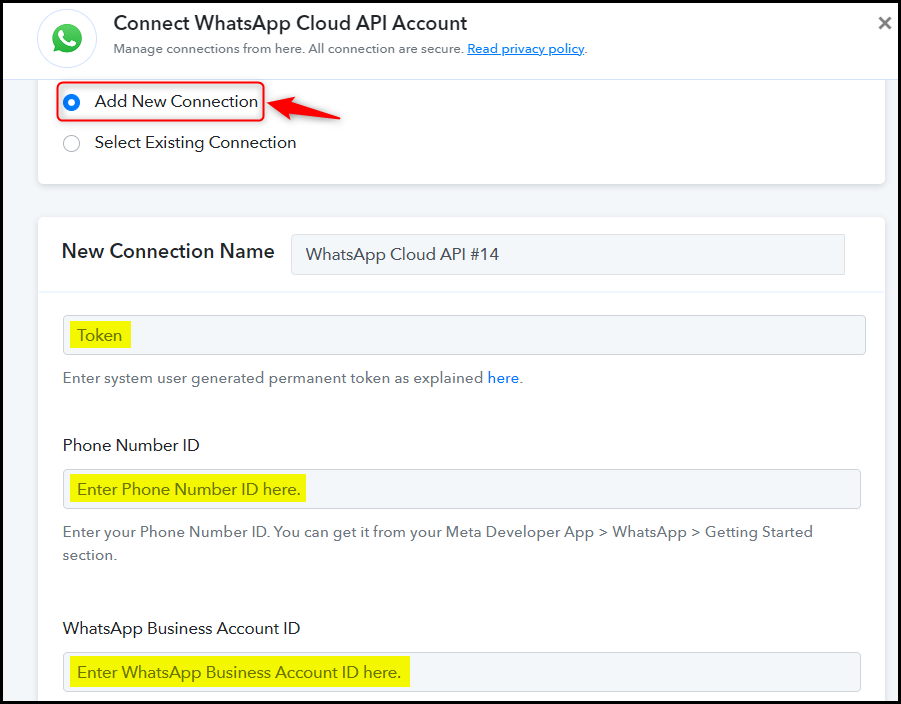
Go to your Facebook Developer dashboard, and copy the Phone Number ID and WhatsApp Business Account ID.
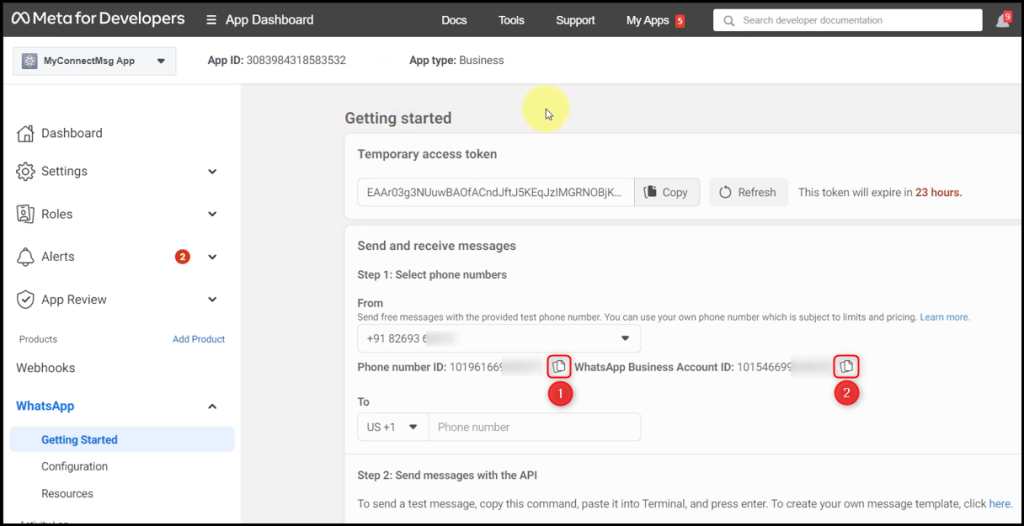
Paste both in their respective fields.
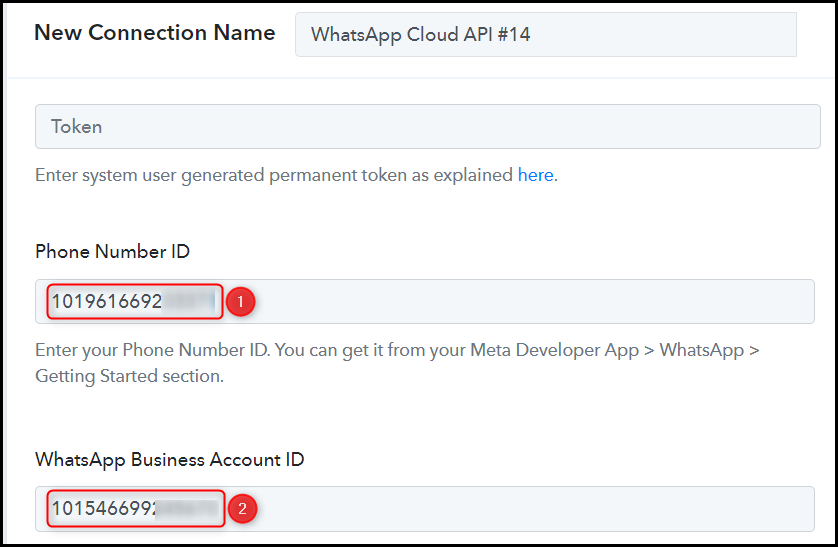
The Token visible on your dashboard is a temporary one that expires every 24 hours. For our workflow, we need a Permanent Token. You can generate a Permanent Access Token by following the steps given in this post.
Paste the Permanent Token, and click on ‘Save’.
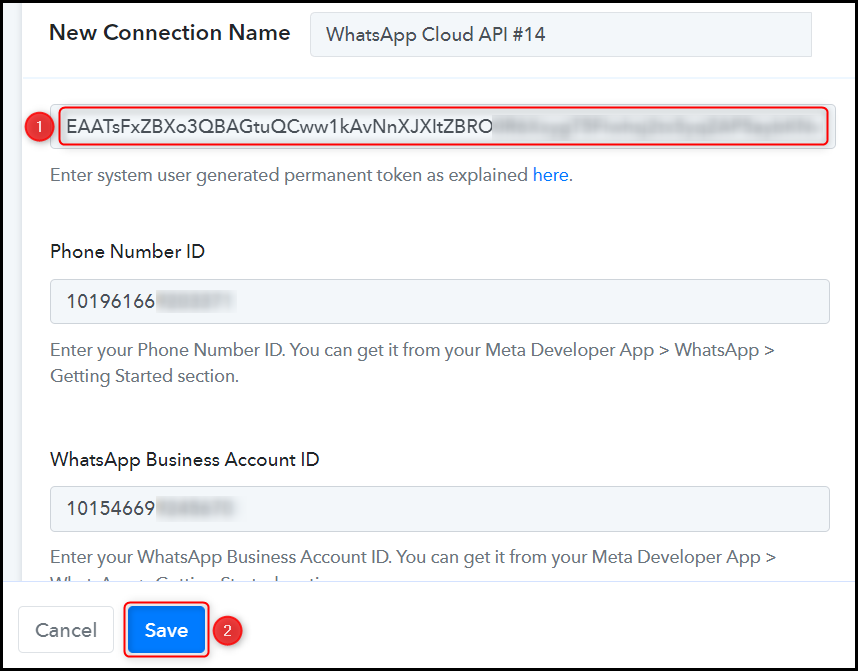
Step 5:- Compose a Message Template
You will be prompted to complete several fields. If you already have a prepared Template Name, you may choose it directly from the list, or if necessary, you may create a new message template by following these steps.

A. Create a Message Template
Switch to your WhatsApp Cloud API dashboard, and click the ‘here’ hyperlink. You will be redirected to a new page.
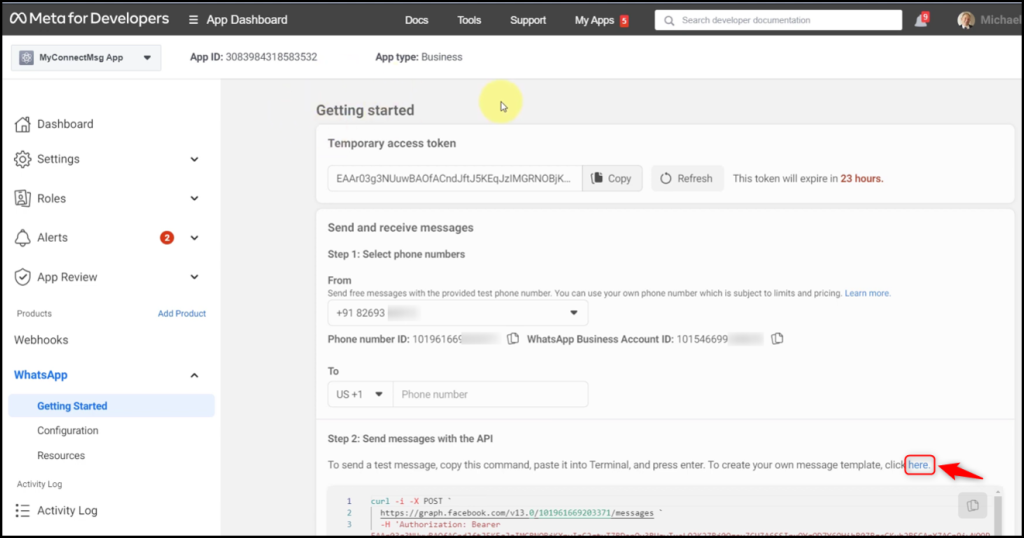
Click on ‘Create Message Template’.

Select a Category, Name the template, and pick a Language. Click on ‘Continue’.
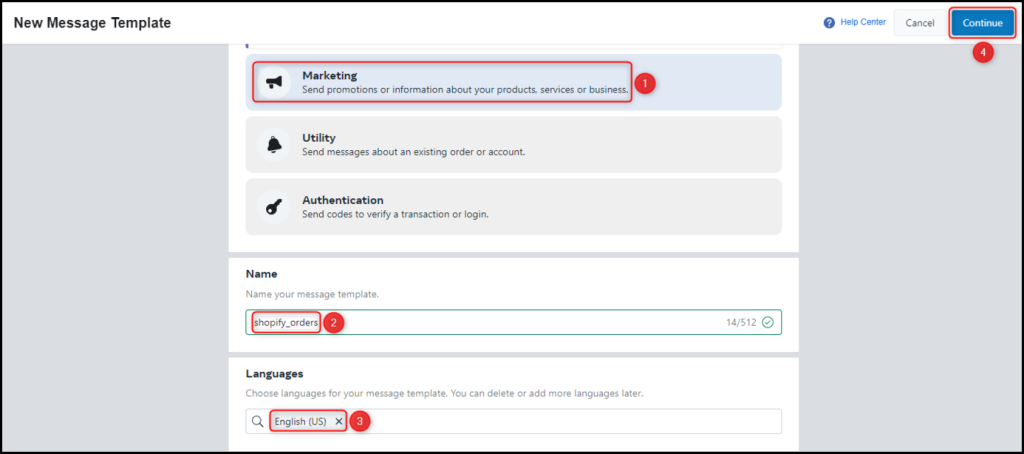
B. Body with Dynamic Data Tags
Enter your message into the Body field. To personalize your message, incorporate Dynamic Data Tags within your template.
Dynamic Data Tags facilitate the inclusion of variables within our template, which will be substituted with actual data in your message. The actual data can be a name, an email address, date, time, ID number, etc. To add a dynamic tag to your template, write your variables between double curly braces {{variable}}.
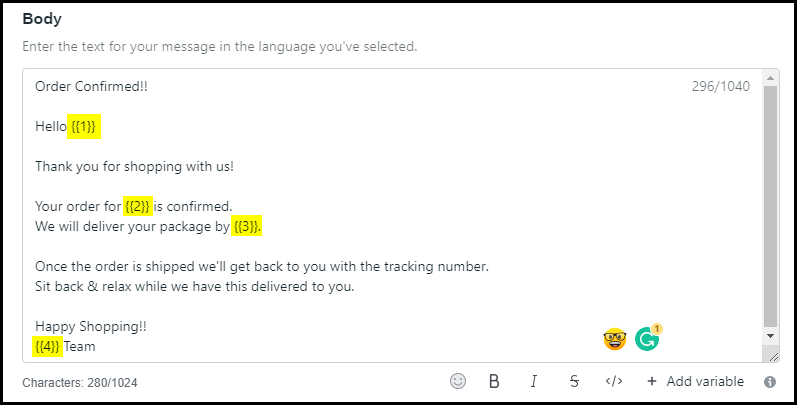
‘Submit’ your message and ‘Confirm’.

Upon submitting your template, it may be approved immediately or be subject to a manual review by Facebook, a process that could take anywhere from a few minutes to several hours. Refresh your page periodically to determine if your template has been approved and is accessible, as denoted by the green color.
Step 6:- Map the Necessary Fields
Now that you have connected your WhatsApp account, all you need is to map the necessary details from the steps above. Mapping ensures our data remains dynamic and changes as per the received responses.
Select your Template Name.

Map the Recipient Mobile Number from the trigger step.
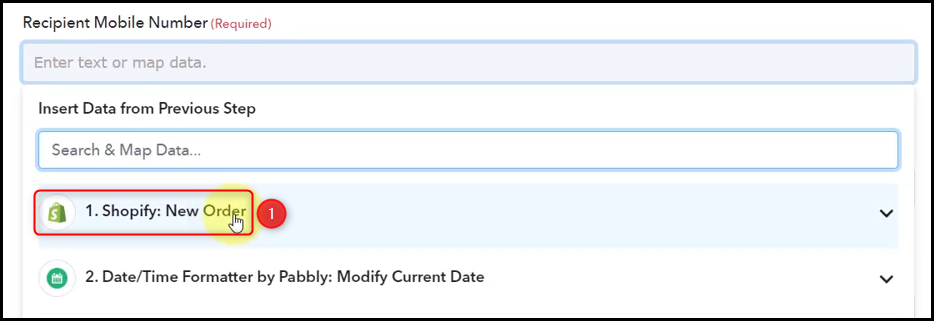
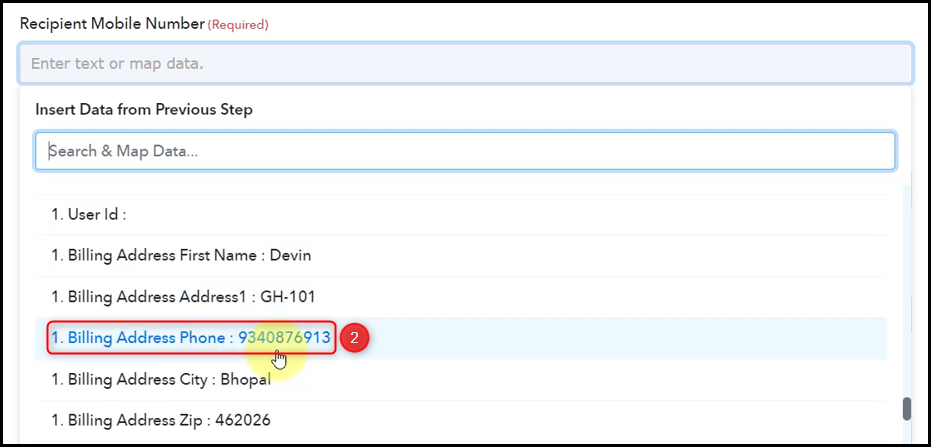

Remember the Dynamic Data Tags we talked about? Those tags will be replaced by the data present in Body Fields.
In Body Fields, enter or map the relevant data from above. This could vary as per your choice of variable. Click on ‘Save & Send Test Request’.
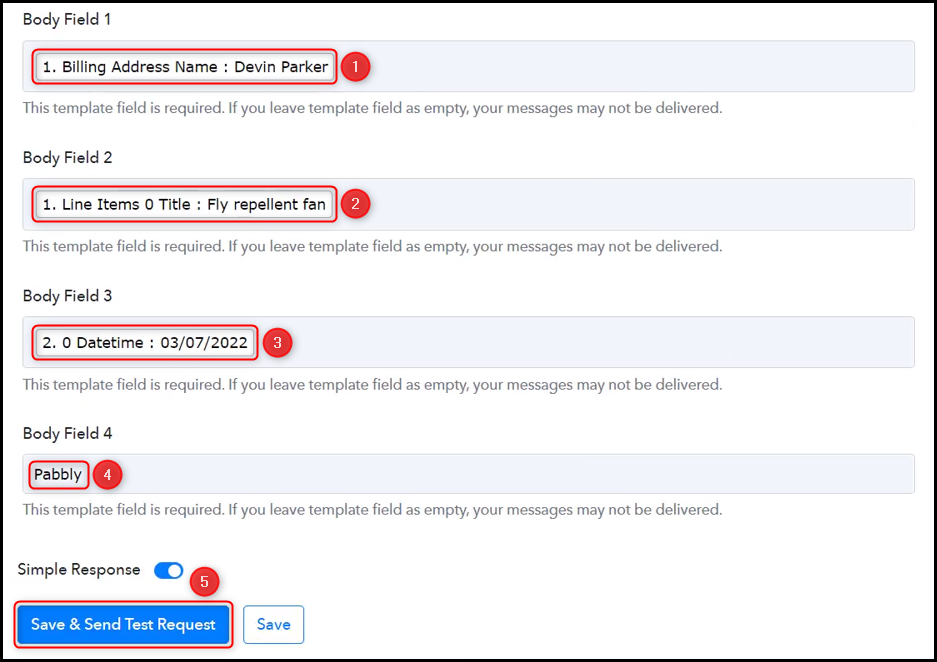
Upon clicking the Save & Send Request button, a message confirming the order will be promptly dispatched to the customer via WhatsApp.
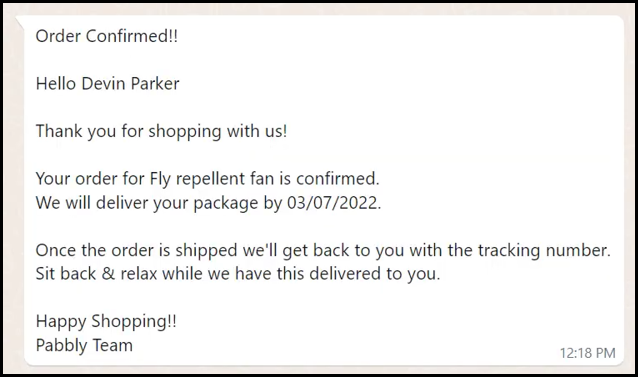
Our automation is complete. We have successfully integrated Shopify with WhatsApp. Now, whenever a customer places a new order on Shopify, they will automatically receive an order confirmation message along with the expected delivery date on WhatsApp.
You can copy this entire workflow by clicking this link.
Sign Up for a free Pabbly Connect account, and start automating your business
Subscribe to our Youtube Channel for more such automation
For any other queries, visit our forum
